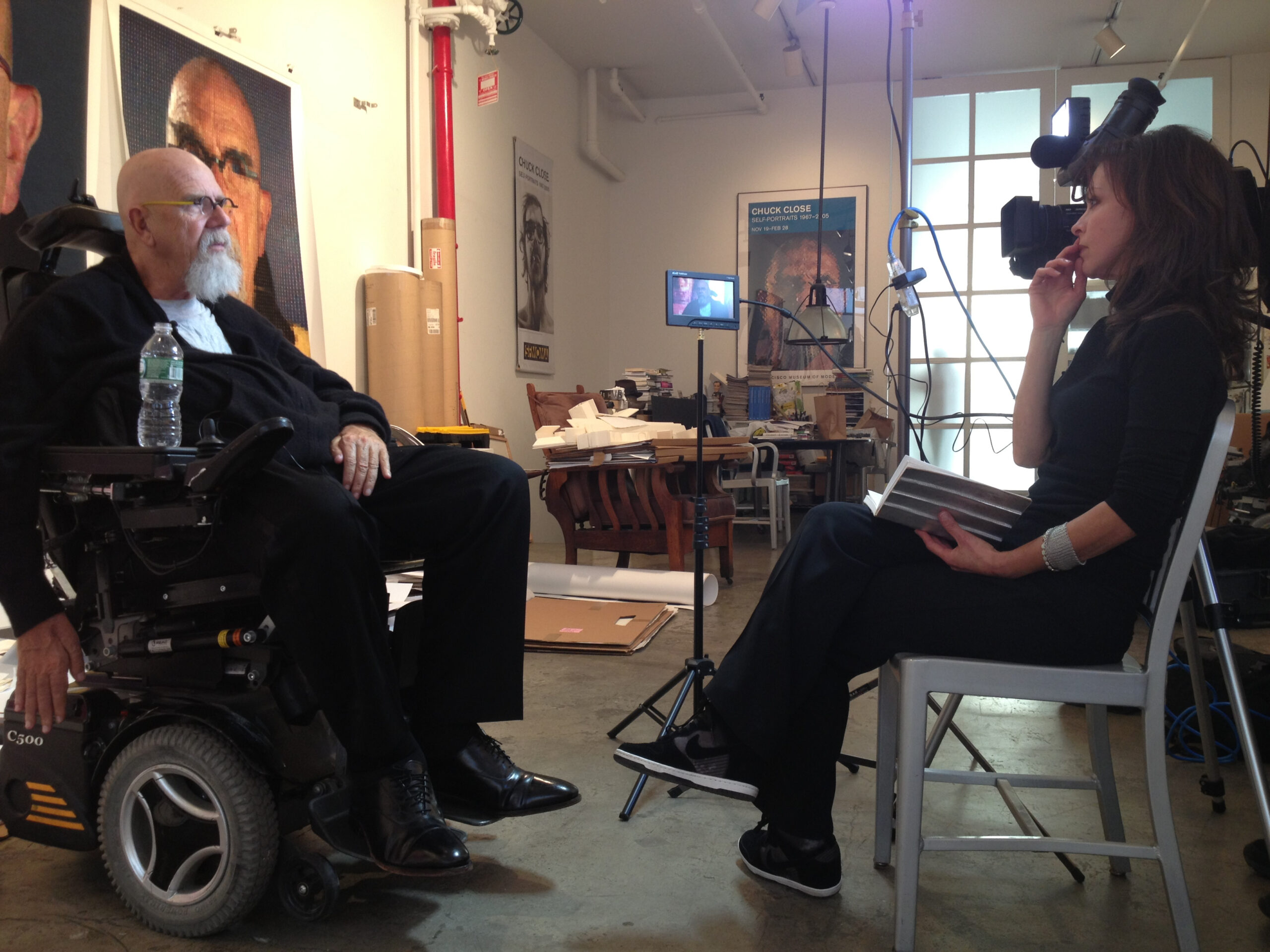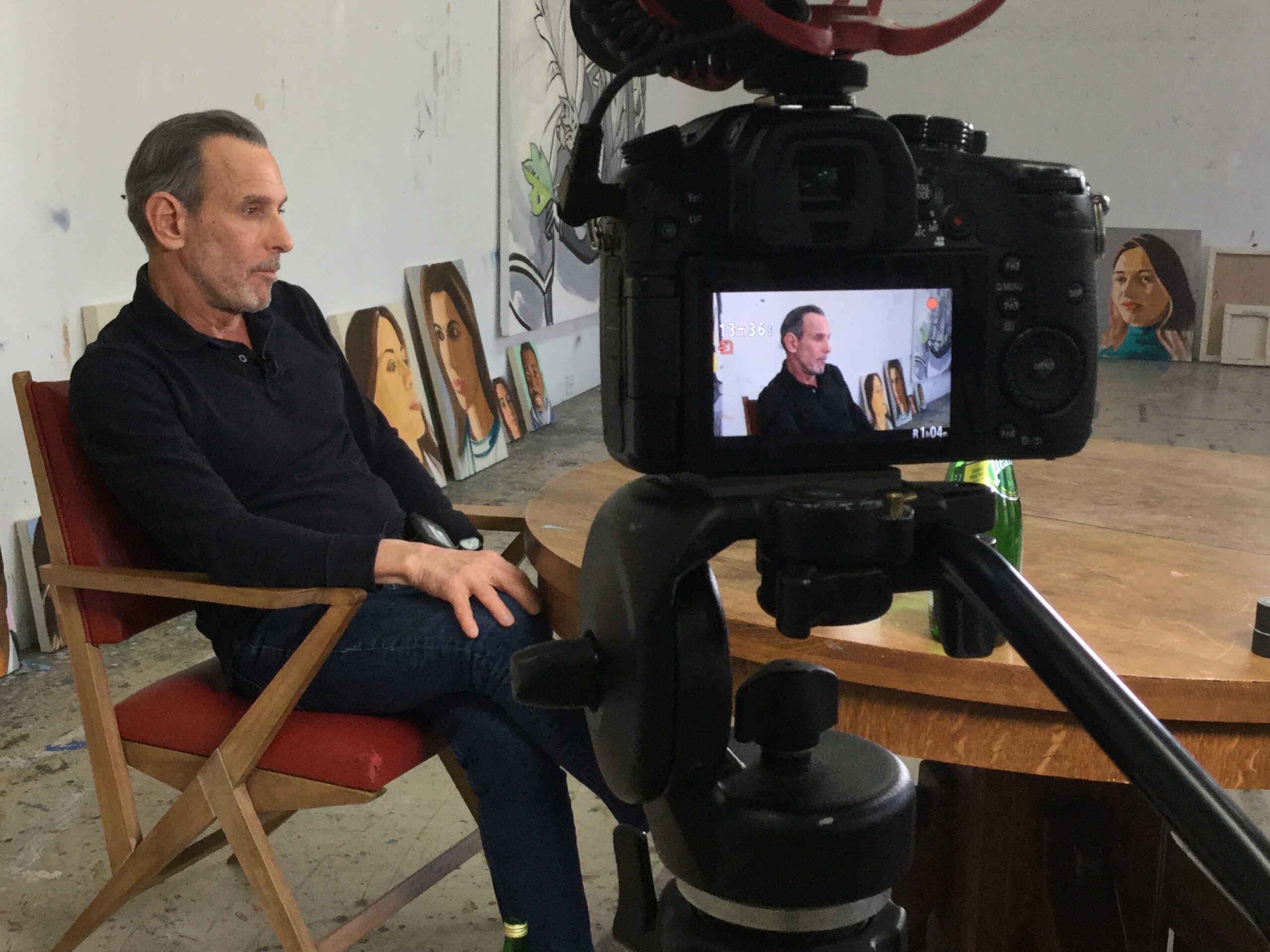
Over the last decade, Sophie Chahinian has literally brought her art history textbooks to life.
It started with Yinka Shonibare, a British-Nigerian contemporary artist whose name was legend during her graduate studies at the University of Manchester in England — as was his exploration of African identity, and its relationship to European colonialism, through painting, sculpture, installation, and moving image.
When a major midcareer survey of Shonibare’s work opened at the Brooklyn Museum in 2009, and the director of her graduate school program invited Chahinian to not only meet the artist, but also sit down in front of him with a camera rolling, she seized the opportunity without hesitation.
The five-minute mini-documentary that resulted would become the first installment of what is now known as The Artist Profile Archive, a series of shorts that feature some of the biggest names in contemporary art today — and humanizes them, explained Chahinian.
“I was incredibly nervous to interview Yinka. I mean, it was incredible, and I had studied him in graduate school, so I just felt very intimidated by the whole situation,” she said. “But you know what? That feeling of excitement has never left. I can’t say that I’ve ever felt any less nervous or any less excited at any point—– and maybe even sometimes I feel more nervous and more excited. But that first level of nervousness and excitement was pretty up there.”
After the first video, Chahinian was hooked, but the idea for the archive itself came later, during a particularly cold winter in East Hampton, where Chahinian has lived since 2006. She was also particularly broke, she recalled with a laugh, finding herself with a new Macbook Pro and a tremendous amount of time on her hands.
[caption id="attachment_103334" align="aligncenter" width="600"] Sophie Chahinian interviews Chuck Close for The Artist Profile Archive. Photo courtesy The Artist Profile Archive.[/caption]
Sophie Chahinian interviews Chuck Close for The Artist Profile Archive. Photo courtesy The Artist Profile Archive.[/caption]
Experimenting with software that was foreign to her, Chahinian built a rudimentary website with a grid of artists she dreamed of interviewing, filming and producing into a documentary one day — visionaries she had studied in school, from Dan Graham, Eric Fischl and Joel Shapiro to Chuck Close, Robert Longo, Shirin Neshat and David Salle, whose film is live as of Thursday, November 12.
“I have to say, a lot of the artists actually from that mockup are in the archive right now — not all of them, but a lot of them,” Chahinian said. “I’m impressed myself at the list of artists that we have. I’m just like, ‘Really?’ It’s very humbling. If we didn’t have those artists participating, what would we have? We wouldn’t have anything but an image board that never went anywhere.”
In fits and starts, Chahinian gained access to each artist, but in the last two years, the project has ramped up, including a new website design that incorporates multi-media elements for each artist page — the star being the documentaries themselves.
For 15 minutes or less, viewers step into someone else’s reality, getting to know artist after artist through their work and the stories they tell Chahinian and her small team, whose goal is to provide a new level of accessibility to, what can be, an intimidating art world.
“This is not elitist. A lot of people think that art is elitist; it is not elitist,” she said. “And if you take a few moments to hear artists talk about their work in their own words, any person will find that it’s accessible and it’s meaningful and that, maybe, they actually like art a lot more than they thought they did. Maybe they’ll have a greater appreciation for artists than they thought they did, and maybe they’ll come to an exhibition with a greater sense of curiosity and information that will create a richer experience of art.
“Because at the end of the day, we’re lucky to have art in our lives,” she continued. “And the more information we have to be able to experience it in a more authentic way, the better off we all will be, because art is part of the human experience.”
Each interview has deepened Chahinian’s own appreciation, she said. For up to an hour and a half, every artist welcomed her into their space, and she went in never knowing what to expect. Now, for example, she looks back on her interview with the late Ed Moses as a gift, her time filming on location in New Mexico with Shirin Neshat as a once-in-a-lifetime opportunity, and her studio visit with Chuck Close as eye-opening.
“It was just incredible to be in his studio and to see how prolific he is and all the media he uses,” she said. “There was so much going on, and this is right before the subway station that he did for the 2nd Avenue line. He was doing a series of mosaics for that and he had some mockups in the studio and that was amazing. And there were all these paintings of Cindy Sherman and photographs of Kate Moss, and it’s just incredible that over the years, I’ve come across these different bodies of work that I had seen in the studio.”
From the day David Salle agreed to sit for an interview with Chahinian to the moment it actually happened, years had passed, the filmmaker said. In that time, he had written and published his book, “How to See: Looking, Talking and Thinking About Art,” and a number of solo exhibitions had come and gone, giving the team — which often includes fellow East Hampton-based filmmaker Matt Hindra — plenty of B-roll to spread throughout the documentary.
[caption id="attachment_103335" align="aligncenter" width="600"] David Salle is the latest interview on The Artist Profile Archive. Photo courtesy of The Artist Profile Archive.[/caption]
David Salle is the latest interview on The Artist Profile Archive. Photo courtesy of The Artist Profile Archive.[/caption]
“We had a very lengthy, intense conversation,” Chahinian said. “He’s a pretty intense guy. I felt very privileged to be able to interview him and my crew was equally mesmerized with everything he was saying. It was worth the wait — absolutely worth the wait.”
Looking ahead, the archive is never-ending and ever expanding, with “no end in sight,” its founder said. Each video that’s included was hard fought, she said, each with its own set of challenges and obstacles that proved worthwhile in the end.
“My greatest hope is that it will take out the intimidating factor of contemporary art,” she said. “That’s part of the reason I went to graduate school in contemporary art, because I felt like I needed that legitimacy to be able to conduct myself in the art world.
“Really, at the end of the day, that’s not actually a prerequisite by any stretch of the imagination, and there are a lot of ways to learn about art that are not as esoteric as having to study in grad school,” she continued. “I absolutely believe that art is for everyone.”
To see the artist documentaries, including the new one on David Salle that goes live on November 12, on The Artist Profile Archive, visit theartistprofilearchive.com.